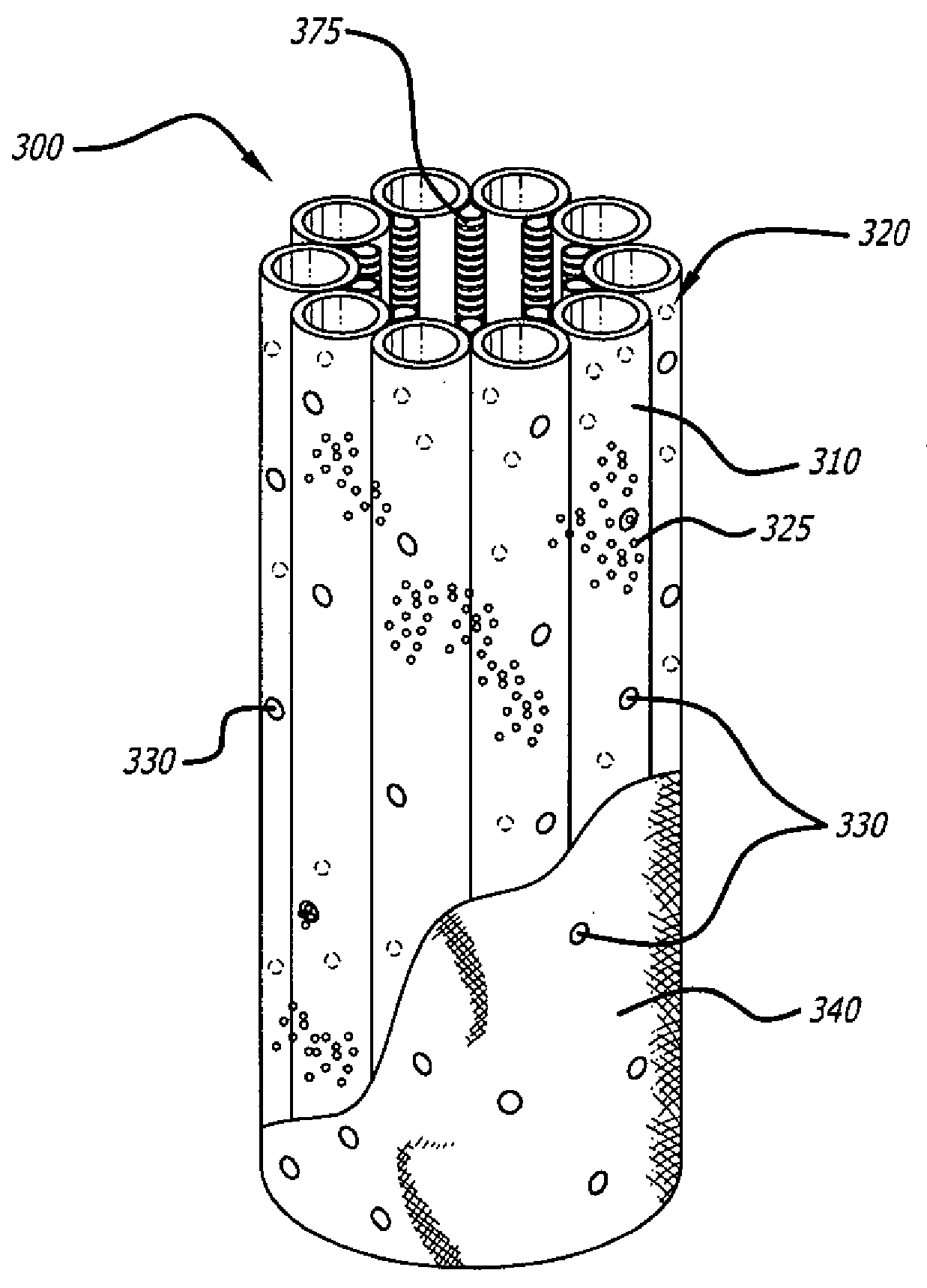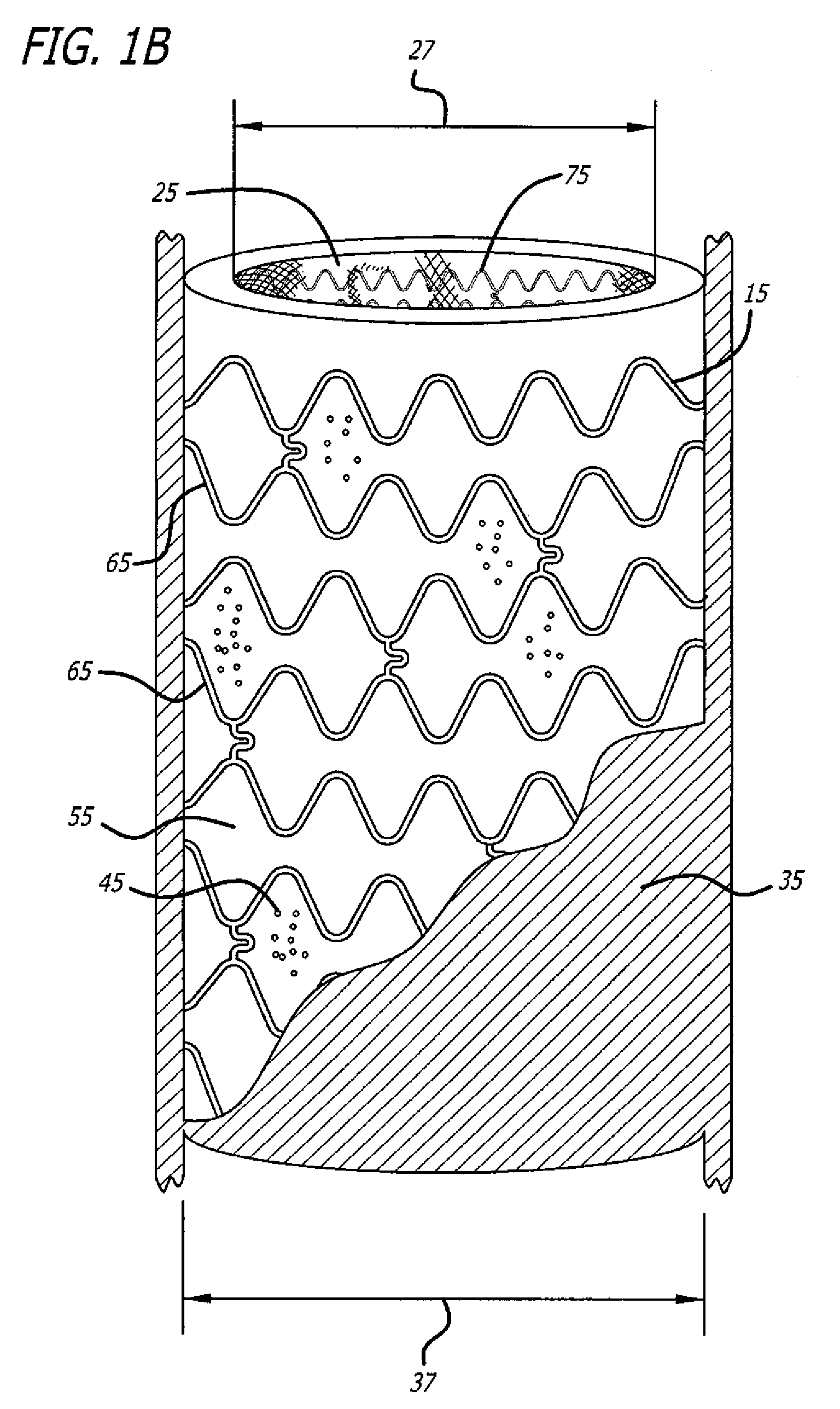Intravascular Devices for Cell-Based Therapies
a cell-based therapy and cell technology, applied in the field of cell-based therapy devices, can solve the problems of affecting the survival of patients, and being more susceptible to infection, and achieve the effect of promoting survival
- Summary
- Abstract
- Description
- Claims
- Application Information
AI Technical Summary
Benefits of technology
Problems solved by technology
Method used
Image
Examples
Embodiment Construction
[0024]A number of diseases and disorders are caused by the malfunctioning of a particular cell type. Types of diabetes, for example, can be caused by the malfunctioning of insulin-producing cells in the pancreas.
[0025]One avenue that has been explored to treat diseases and disorders caused by malfunctioning cell type(s) has been the implantation of cell encapsulation devices (CEDs). In these devices, functioning cell types are housed within a semi-permeable membrane having a pore size such that oxygen and other molecules important to cell survival and function can move through it but that cells of the immune system cannot. In the case of diabetes, this approach can allow glucose and oxygen to stimulate insulin-producing cells to release insulin as required by the body in real time while preventing immune system cells from recognizing and destroying the implanted cells as foreign or allowing the implanted cells from escaping encapsulation.
[0026]While previously developed CEDs offered...
PUM
 Login to View More
Login to View More Abstract
Description
Claims
Application Information
 Login to View More
Login to View More - R&D
- Intellectual Property
- Life Sciences
- Materials
- Tech Scout
- Unparalleled Data Quality
- Higher Quality Content
- 60% Fewer Hallucinations
Browse by: Latest US Patents, China's latest patents, Technical Efficacy Thesaurus, Application Domain, Technology Topic, Popular Technical Reports.
© 2025 PatSnap. All rights reserved.Legal|Privacy policy|Modern Slavery Act Transparency Statement|Sitemap|About US| Contact US: help@patsnap.com



